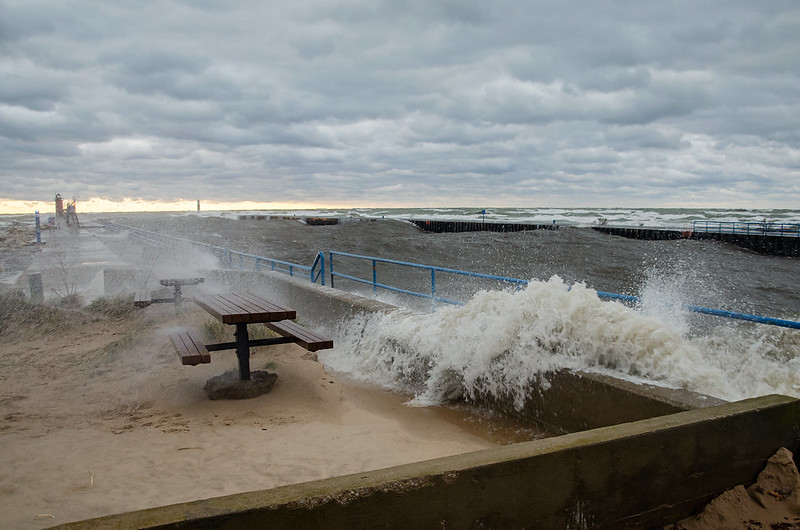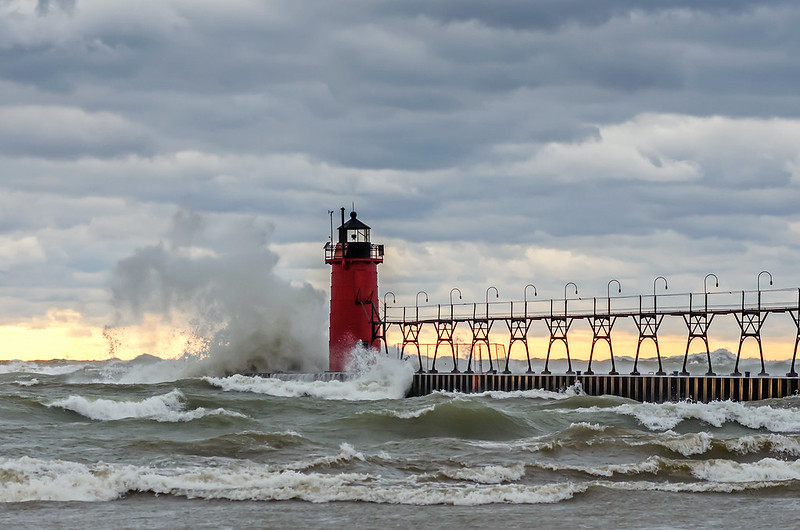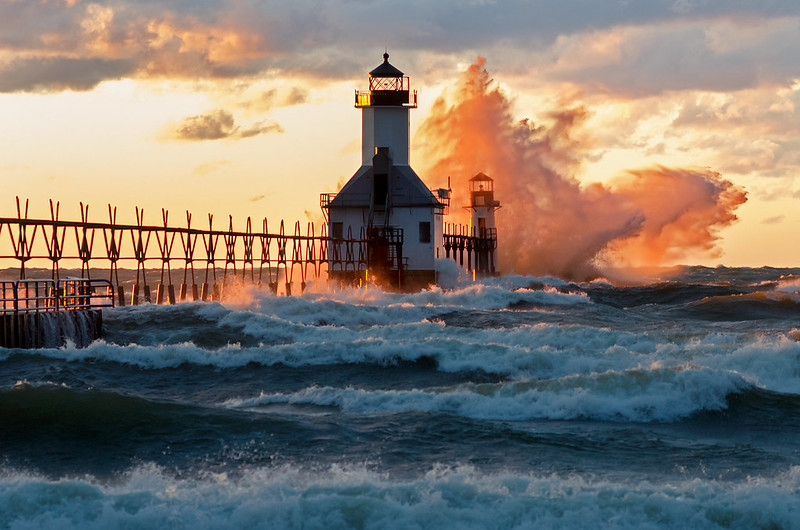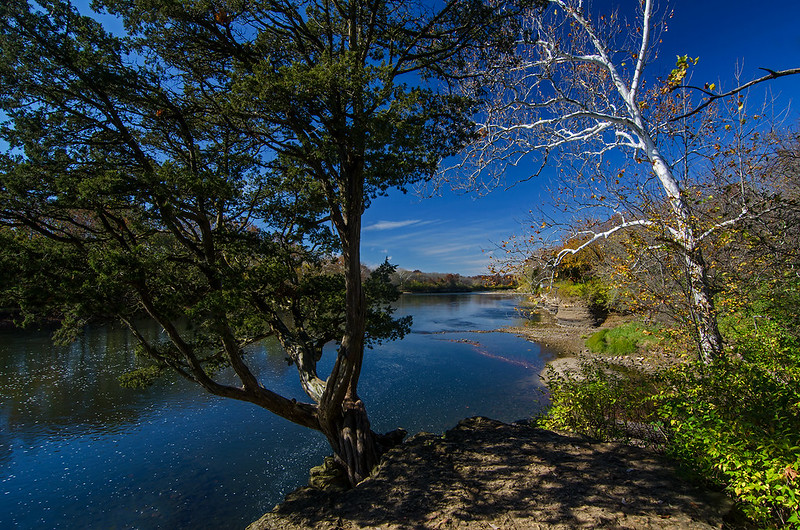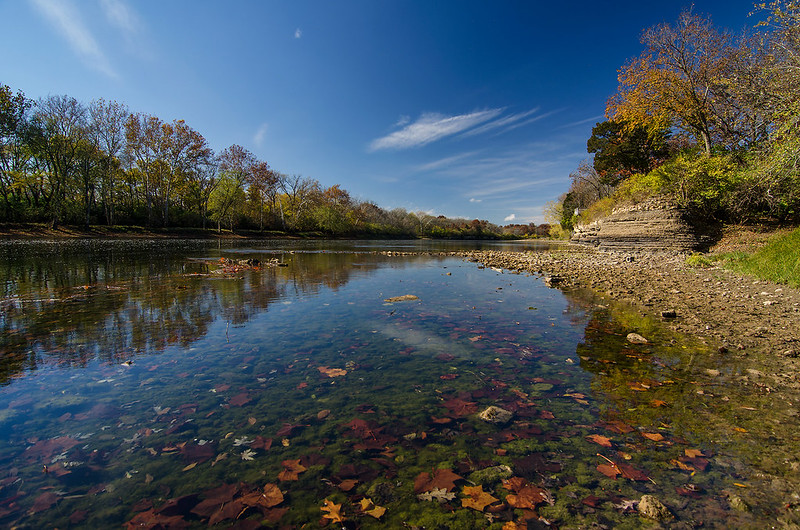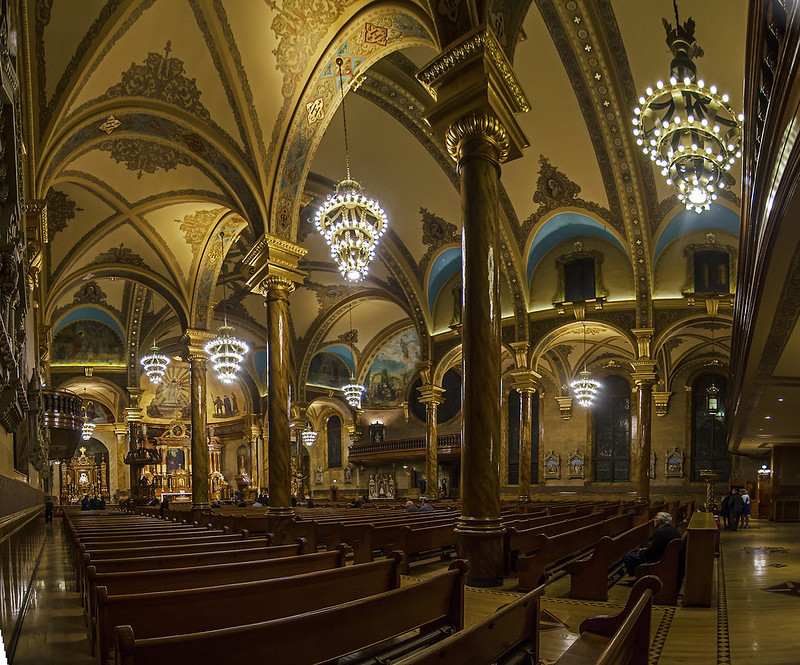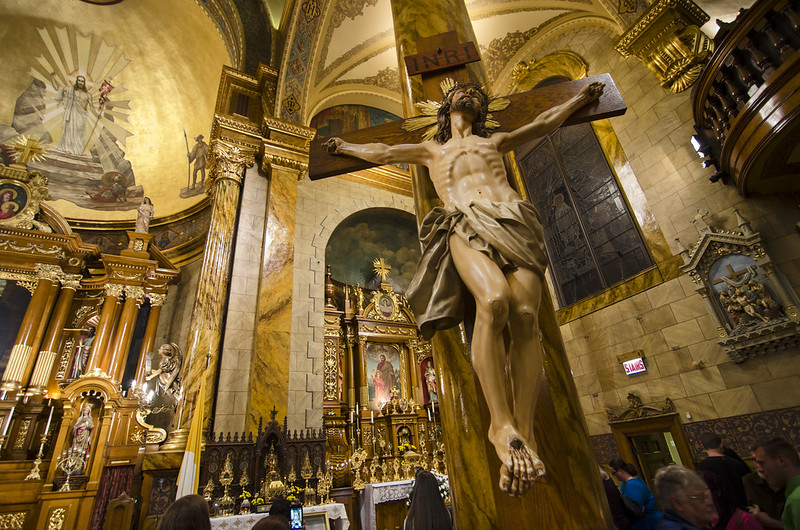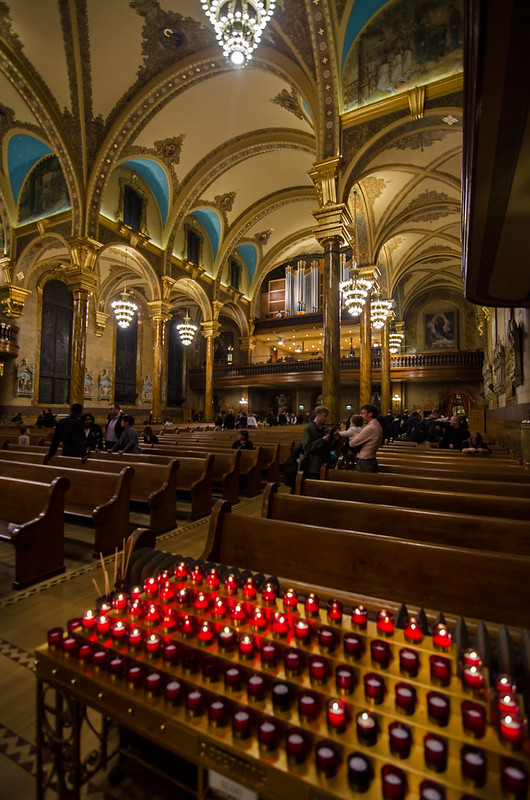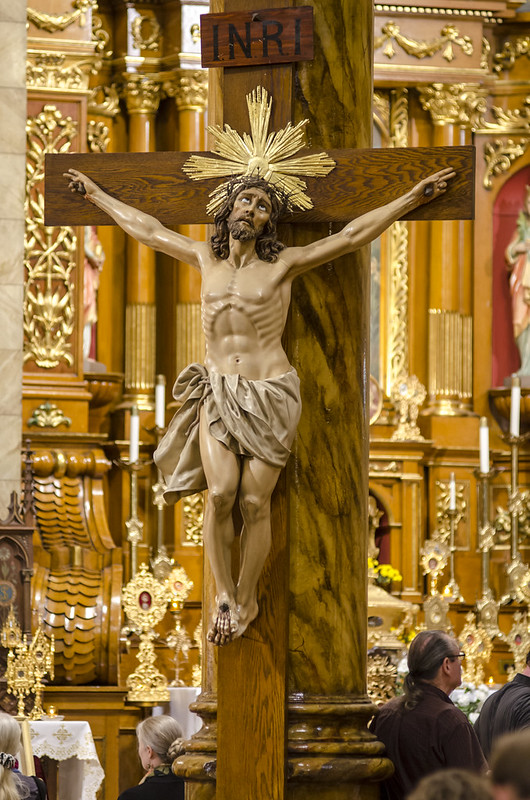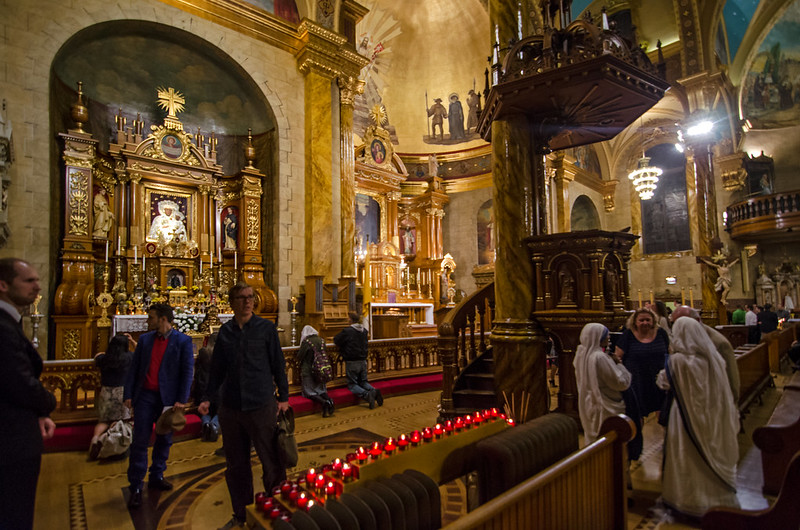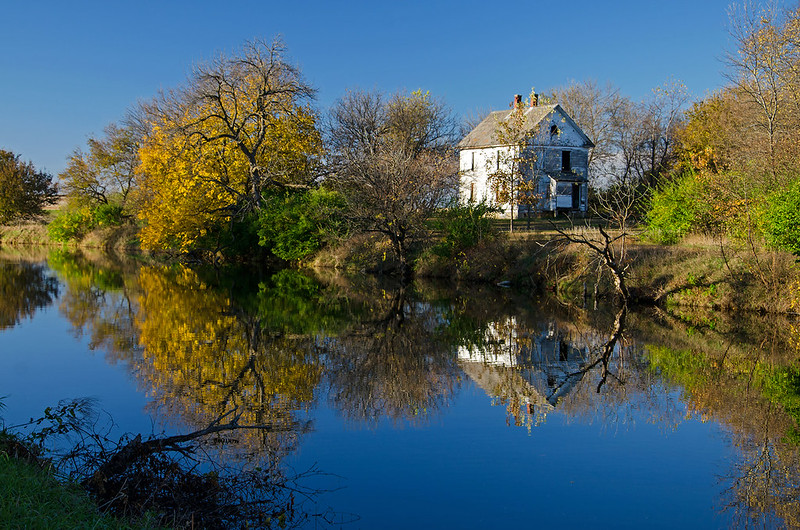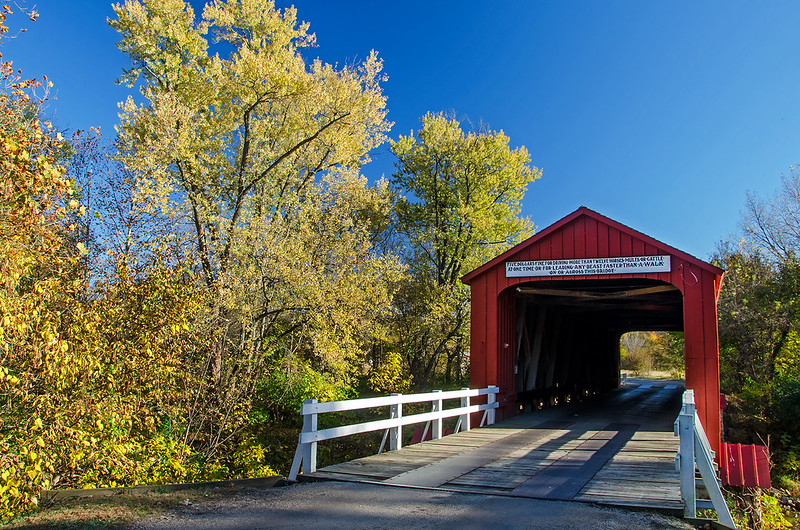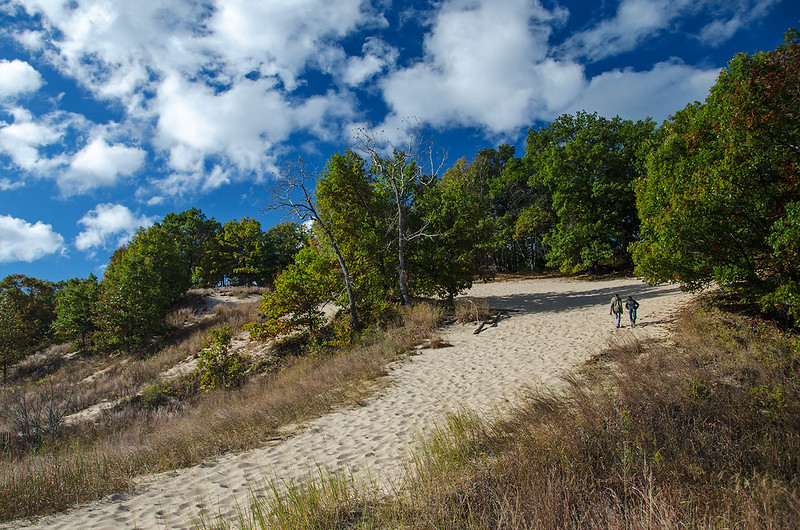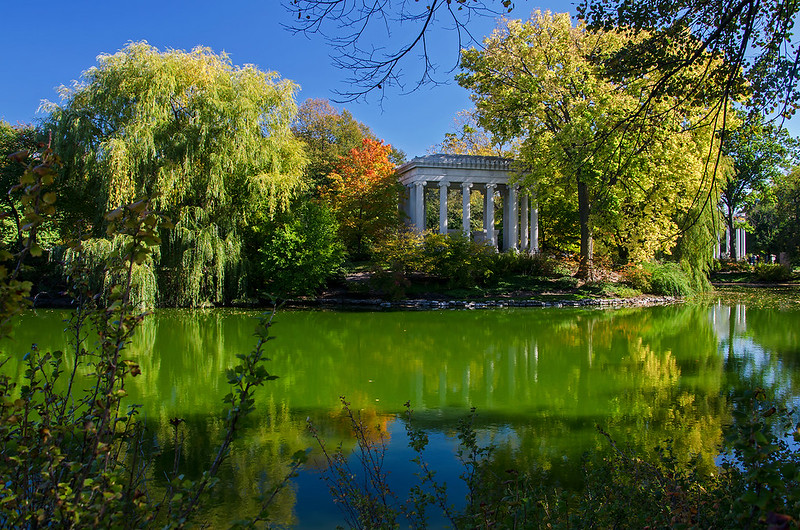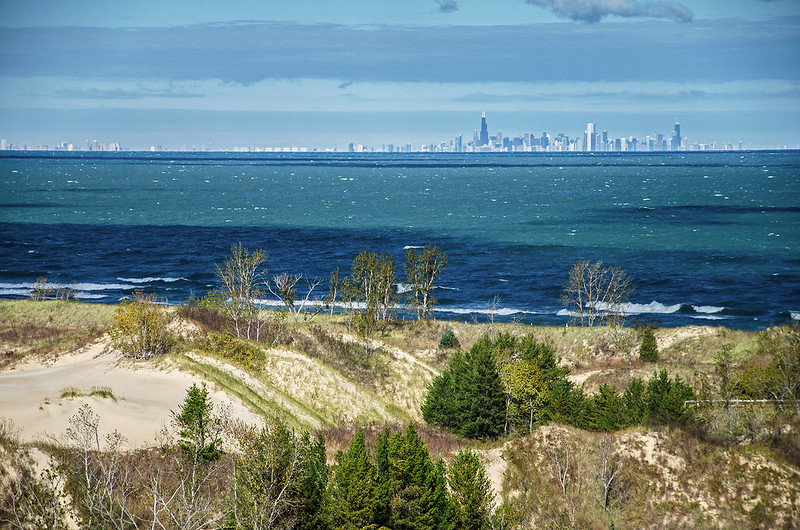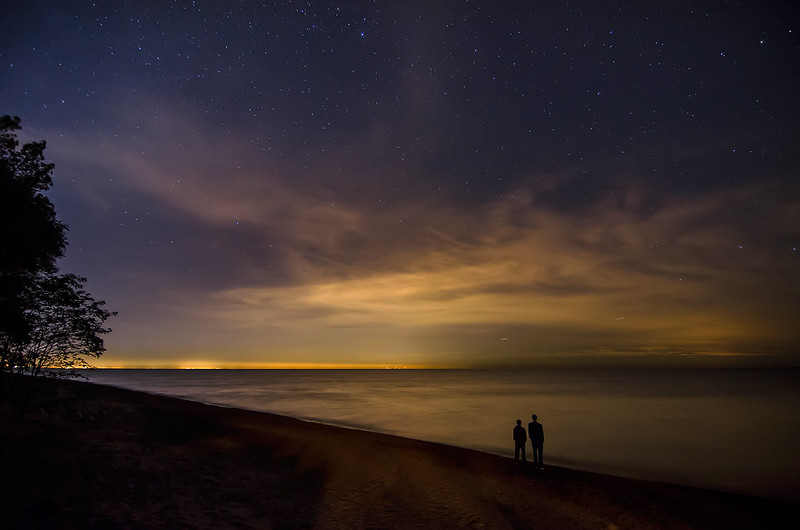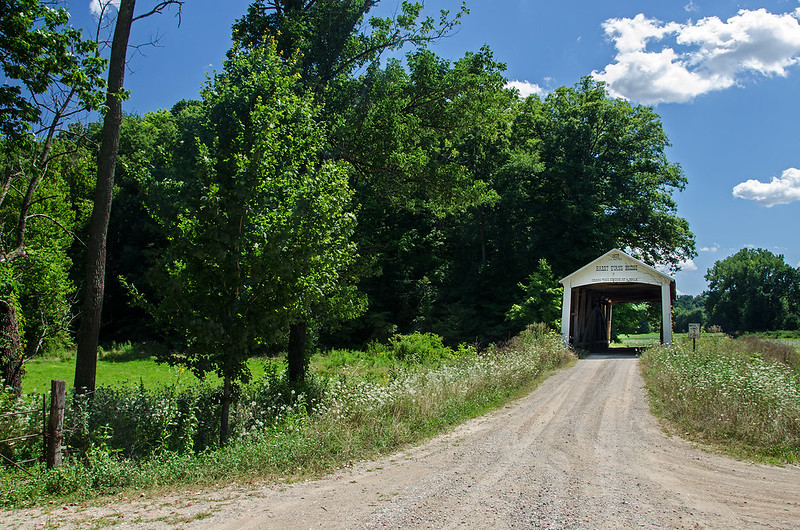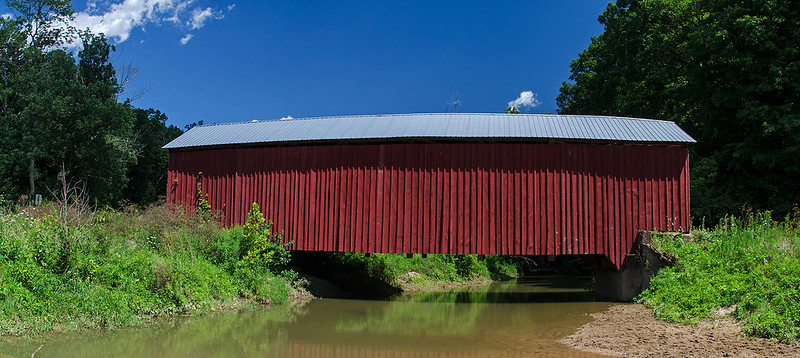
Photographing distant subjects in high winds isn't always easy. Even when mounted on a tripod, the camera can move slightly, and in this case, sand and water are constantly blowing on the camera. Add shooting into the sun to the equation, and things get interesting.
Compensating for all of the above, and attempting to keep the shutter fast to capture splashes, I played around a bit to silhouette the lighthouse against the yellow sky. No splashes here, but doing so brings out the rich color of the sunset instead of washing it out and turning it white. At this moment, the low angled sun only reached the tips of the breaking waves. The foamy water was highlighted by the sun, and in some places, the light came through the water, giving the waves a translucent quality.
Several times while I stood on the beach, waves reached my position, in two cases, I was standing in water almost to my knees, and up to the tops of my boots. Not the first time I've gotten wet here. A few years ago I was splashed by a breaking wave, soaked from head to toe in 20 degree Fahrenheit temperatures. I did manage to keep the camera dry.


